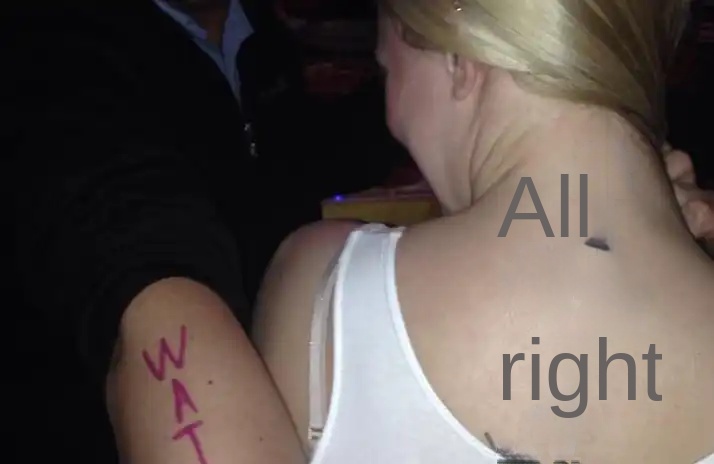What are some key details to watch for in Arweave's Parallel Computation Scheme AO?
Source: Chainfeeds
The Arweave team finally announced the launch of a parallel computing solution called AO at the release event after a long period of preparation. They have been working on it for a year from conception to development, but its earliest history can be traced back to SmartWeave, a permanent storage-based smart contract solution proposed by Arweave four years ago. The choice of these technical solutions is very different from Ethereum or other Ethereum-like networks: Ethereum starts with a Turing-complete virtual machine and gradually expands its territory, while Arweave starts with a network that provides permanent storage and then gradually adds computing power.

There are too many technical topics worth comparing and exploring in this content, and the Arweave team is unlikely to explain all the technical highlights and ideas in just over an hour. After watching the release event on this link, I have compiled these issues and topics worth paying attention to.
What is AO?
AO is a type of super parallel computer that operates in a decentralized computing environment, allowing for the simultaneous parallel execution of any number of processes. Compared to previous decentralized computing systems, AO can achieve both large-scale computing and verifiable computing. The core of AO lies not only in increasing the number of verifiable computations, but also in achieving arbitrary levels of verifiable computing. By constructing three different sub-networks and using Arweave as the underlying layer, AO has achieved high levels of parallel processing capability and scalability.
Why is it named AO?
Taken from the "Actor Oriented" concept, the abbreviation is AO.
In computer science, there is a concurrency model called the Actor Model, which is used to design and implement distributed systems. The basic unit in this model is called an "Actor". Actor-oriented design or programming refers to the design or programming method based on the Actor Model. This method is suitable for building highly concurrent, distributed, and fault-tolerant systems.
Arweave founder Sam Williams believes that AO is a programming paradigm that is completely different from smart contract systems, and it is basically the best solution for all distributed systems and Web2 era in the world today.
GPT4 gave me an example: it can be compared to an actor in a theatrical performance. In a play, each actor plays a role and acts independently, interacting with other actors through dialogue (messages), but they do not share each other's internal state (private state). Each actor can only react by observing the behavior of other actors (received messages).
Here's an interesting fact: The title of the paper that proposed the Actor Model in 1973 was "A Universal Modular Actor Formalism for Artificial Intelligence". It was originally intended for research on artificial intelligence.
What are the components of AO?
AO consists of three subnets, namely Messenger Unit (MU), Scheduler Unit (SU), and Compute Unit (CU). MU is responsible for receiving and processing information; SU is used for scheduling and sorting information; CU is used for processing calculations.

What is the relationship between AO and Arweave?
"AO is actually an open and flexible data protocol used to store computational logs on the Arweave protocol. It is not a permanent ledger nor a network itself."
As a decentralized computing environment, AO utilizes Arweave's scalable on-chain storage as its permanent host to store data during runtime. AO allows for arbitrary numbers of parallel processes to run simultaneously and coordinate with each other through message passing, similar to how computers in data centers and on the internet work together by sending data packets.
In short, AO is built on top of the Arweave foundational layer, utilizing Arweave's on-chain storage functionality to meet its decentralized computing environment's persistent storage needs.
AOS and AO are related in what way? What kind of programming language is Lua?
AO is the architecture of a parallel computer, while AOS is a specific operating system based on this parallel computing solution. Developers can use the Lua language to develop applications (write smart contracts) in AOS.
Lua is an easy-to-learn high-level language that is very concise and easy to use. Interestingly, I wrote some scripts in Lua almost 4 years ago, and it was indeed a very easy-to-learn programming language. At that time, I had zero knowledge of Lua, but I needed to use automation tool HammerSpoon to implement some functions to obtain prices and information. I was able to do it in just a few days. If there is GPT to help, it will be even easier.
What are the applications of AO?
Currently, the community has developed two applications, namely the decentralized exchange Bark and the decentralized stablecoin protocol astro, which can be compared to Uniswap and MakerDAO. Bark has already launched on the testnet, while astro will be made public later.
EverVision founder Outprog also appeared at the press conference and was frequently mentioned by Sam. Their decentralized trading platform Permaswap was developed much earlier than the AO project was proposed, and they also had the opportunity to further develop and expand under the architecture of AO.
Will AO be iteratively updated soon?
Sam said that in the future, only updates similar to Bitcoin style (i.e. very low frequency) will be needed. Over time, the core functions and rights of users will remain unchanged with minor upgrades. There is no "trust me, brother" roadmap here. There is only a complete and transparent protocol that you can audit and decide whether to use it yourself.
Does AO have its own token?
This information has not yet been made public.
原文链接 translates to
Original article link in English.
Welcome to join the official BlockBeats community:
Telegram Subscription Group: https://t.me/theblockbeats
Telegram Discussion Group: https://t.me/BlockBeats_App
Official Twitter Account: https://twitter.com/BlockBeatsAsia


 Forum
Forum Finance
Finance
 Specials
Specials
 On-chain Eco
On-chain Eco
 Entry
Entry
 Podcasts
Podcasts
 Activities
Activities
 OPRR
OPRR









